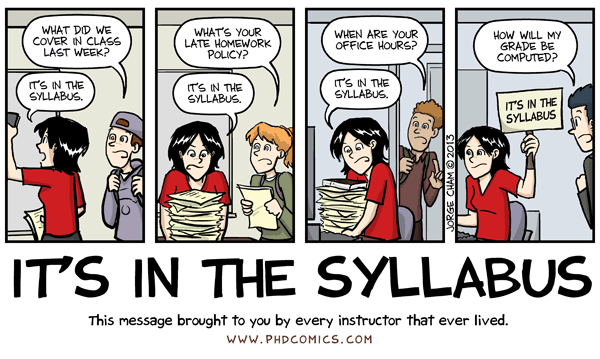Administrator logic? The moral of the story is that we lie in the bed we made.
When yet another convoluted directive did the rounds of the University, one Ph.D. with enough time on hand to comment wrote, acidly, ‘Administrator logic’ and very kindly hit ‘Reply All’ so that we all could savour the wit and insight.
It is the sort of snide remark that can only be made by the naive. ‘Why so,’ asks Mr Spock?

The rules and regulations of the University inevitably trace back to a committee of professors, lecturers, and other academics. That we make our own rules is the ultimate explanation for the way they are.
With a committee of smart people, there is usually a competition to show just how smart each person is by thinking of things to include, cases to anticipate, including layers and layers of protection for students, especially those who manipulate the system the most.
I observed, and at times as a committee chair had to deal with, this competition to complicate, and the zealous desire to defend poor defenceless students against the mean University (embodied in yet another committee of academics).
To take one pivotal example, the unit of study syllabus has grown to a multi-volume work through this process. When instructors prepared their own, most were three to six pages for a semester, citing reading assignment and explaining written assignments, assuming the context of university study. Each syllabus would be amplified and explained further in the classroom over the semester.
Then came the pressure to move to a minimum standard for the syllabus. I chaired the first committee that did that, and I was happy to do so because I had seen some ludicrous specimens of syllabi first hand, e.g.,
the instructor did not know the name of the unit of study,
the syllabi did not state assignments,
the reading list was a joke,
and ….then there were the bad examples. (Including at least one that boasted of the number of failures there would be.)
From that bad seed grew today’s Godzilla the Syllabus. Its growth was cultivated solely by committees of academics who each year added more and more to the minimum standard. We could not longer assume anything. Each syllabus had to be a complete and stand-alone document. In it every contingency had to be anticipated and provided for, so that no student could later say ‘I didn’t know…’ The last one I did slavishly in accordance with the template was eighteen pages, of which six were mine, and the remaining twelve were generic information about the University.
Now a student who gets four of these tomes each semester, eight in a year, will find repeated in each of them rafts of material that virtually none of them will ever need. The labor and energy that goes into the lists of campus resources, methods of appeal, location of the front door of the library, definitions of plagiarism (revised annually by yet another committee of scholars), and more is never calculated.
We have then a syllabus template that comes loaded with pages of ancillary information, which is all readily available elsewhere. Repetition, repetition, repetition, there is no evidence that repetition reaches anyone but it is something to do. That much of this is now electronic both makes it even more easily available and even less likely to be read.
Each year the relevant committee tweaks the template. It is a standing item on the agenda these days. It does this at a time of its choosing, and what it does depends very much on which Ph.D.s are present with a bonnet full of bees.
The timing is always bad because there are four semester, summer, first, winter, and second. (Though at one time members of a committee objected to the labels ‘first’ and ‘second’ because it would hurt the feelings of someone who started in the second semester to call it ‘second.’ I make no joke here but report the fact with a straight keyboard. What saved the numbers first and second was the inability of the members of the committee to agree on names to put on the semesters. No, we cannot use the seasons since our seasons do not correspond to those of the Northern Hemisphere from whence arrive most of our golden fee-paying students descend, and it would confuse them. And so.)
Inevitably the new template for the calendar year appears a fortnight before the start of the first semester in March. Too late for those who organise themselves in advance of the stampede. Timed perfectly to create traffic jams on unit of study servers and at photocopiers.
Moreover, the tweaking can be minor or major. It is seldom identified, explained, or justified. The instructor is then enjoined to use it.
Because it repeats reams of information from other University offices, there is a great deal of room for discrepancies, because just as the committee is revising the syllabus template, these other offices of the University are also editing their own material. Discrepancies are the inevitable result. A well intentioned student can then find two different directions, one in the syllabus and another on the homepage of the relevant service. Yes, I personally tried using URL links but found even these changed.
It then falls to the administrative staff to distribute, to cajole use, and to record compliance with the template. And then to be the butt of such criticism. Since the administrative staff are professionals they do not reply in kind.
More than once in handing these things out on paper, hoping that it would be read before filing, I saw students, wiser in the ways of the world than the committee that designed the template, rip the last dozen pages off and drop them in the recycling bin on exit.
Is it any wonder that students grow cynical.

I hasten to add that the competitors in committees are always a minority, perhaps a quarter of the membership. The other three-quarters, if they attend meetings at all, are present only in body and curriculum vitae (CV). The only eye contact, the only time I heard the voices of members of this silent majority was when I introduced myself to them. Yet I am sure when came the time to apply for promotion this committee service would have been cited in bold under Service on the CV.
Skip to content
